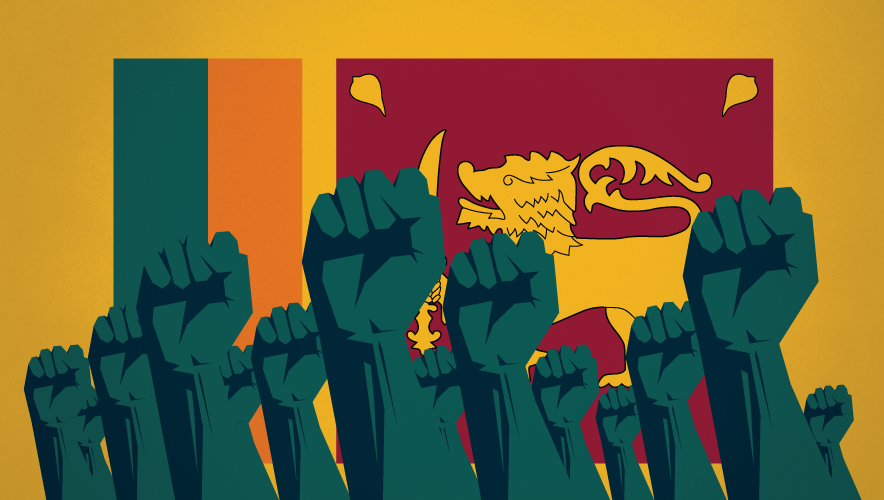Sri Lankan Protests Turn Violent with Deaths and Arson
After weeks of peaceful mass protests over Sri Lanka’s economic crisis, on Monday, 9 May, eight people died and more than 200 were injured as pro-government supporters clashed with the protesters.
The violence spurred even more violence.
The protesters—frustrated over shortages of food, medicine, medical equipment, fuel, and power—have been calling for President Gotabaya Rajapaksa’s resignation as the country continues to slog through its worst economic crisis.
“Analysts say that economic mismanagement by successive governments weakened Sri Lanka’s public finances, leaving national expenditure in excess of its income and the production of tradable goods and services at inadequate levels,” according to Reuters. “The situation was exacerbated by deep tax cuts enacted by the Rajapaksa government soon after it took office in 2019. Months later, the COVID-19 pandemic struck,” which decimated a large chunk of one of the country’s larger sources of income: tourism.
The demonstrators’ frustrations were not just about the financial situation of the island country. They were also calling for the removal of the Rajapaksa family from power, as several of its members were placed in influential government positions and those family members are now accused of mismanaging the country’s economy. Rajapaksa declared a state of emergency on 6 May as protesters forced several shops and businesses to close while crowds blocked streets and prevented legislators from leaving the Parliament building in the country’s capital city of Colombo, according to The New York Times.
Sri Lanka is facing its worst economic crisis in decades. In response to these pressures, Sri Lankans launched demonstrations across the country—some of them violent—last week, and the protests continue. https://t.co/dbUGf9TdLr
— Security Management (@SecMgmtMag) April 4, 2022
Although the country’s president had been rumored in recent weeks to be seeking to calm the protests by asking his older brother and Sri Lanka's prime minister, Mahinda Rajapaksa, to resign and make way for a new government, come Monday morning Mahinda Rajapaksa still held his post and was addressing a pro-government mob that had been bused to his home for a meeting.
“The supporters then walked out and charged on peaceful protesters…attacking them and dismantling their protest sites,” the Times reported.
After the clash Monday with a pro-government mob at popular seafront park Galle Face in Colombo where demonstrators had ensconced themselves, vigilantes brutally targeted government supporters and burned more than 50 properties owned by the Rajapaksa family or its supporters.
By 10 May, Mahinda Rajapaksa had resigned from his post as prime minister and fled to a naval base with his family. Opposition lawmakers have called for his arrest over allegations of organizing the attack on the protesters, according to the Times.
Sri Lanka’s President Rajapaksa is refusing to step down, and the opposition has declined his offers of a unity government. Here’s what could happen next https://t.co/MthCzoY7E8
— Bloomberg Asia (@BloombergAsia) May 11, 2022
The government issued a nationwide curfew, however, incidents of arson have continued. “Shops near Colombo were torched, as well as a resort owned by former Prime Minister Mahinda Rajapaksa’s son,” the BBC reported.
Along with the curfew, the government also ordered military troops to openly shoot anyone found looting or damaging public property or harming others. “It also deployed tens of thousands of army, navy, and air force personnel to patrol the streets of the capital Colombo,” the BBC said.
President Rajapaksa extended the curfew until Thursday morning and has given no indication of resigning from his position.
